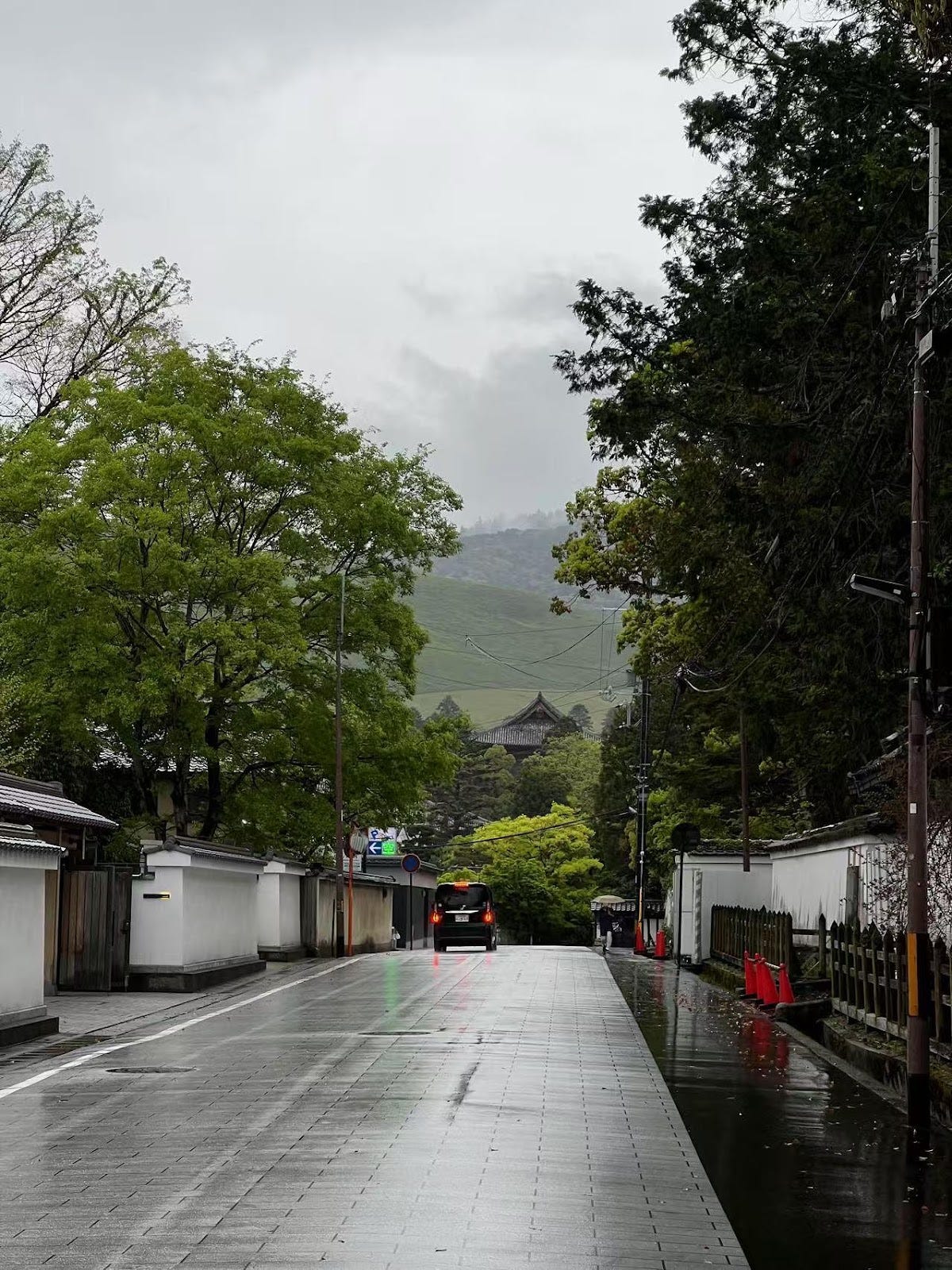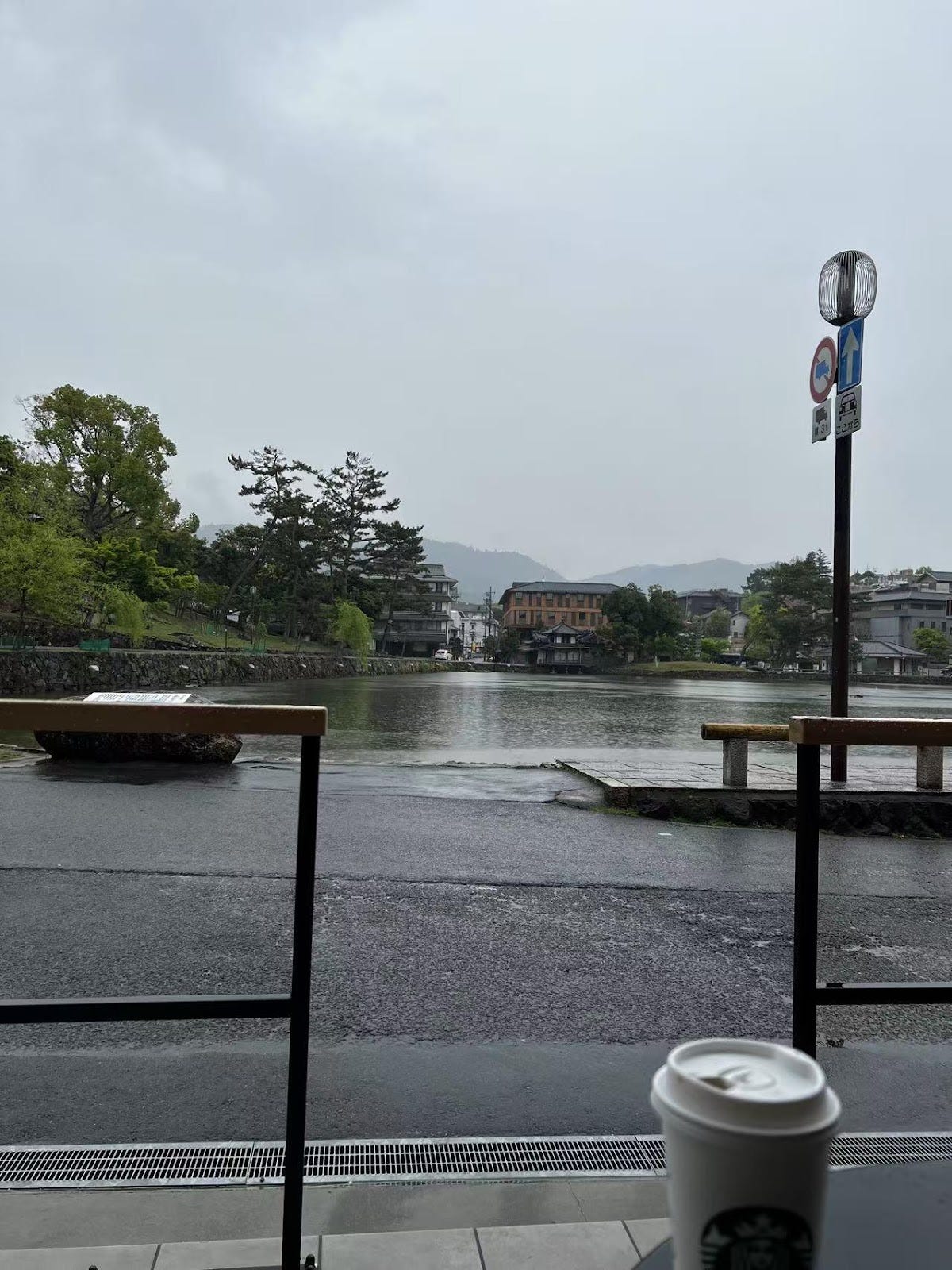Traditional Japanese Architecture and Atmospheric Streets
by Wang Yubo 23kc1033
Research Topic: Traditional Japanese Architecture and Atmospheric Streets
I have always been deeply fascinated by traditional Japanese architecture and the unique atmosphere of old-style streets. To explore this interest further, I traveled to Nara, one of Japan’s most historically rich cities. I deliberately chose to visit on a rainy day, believing that the soft, misty weather would enhance the nostalgic and timeless feeling often associated with traditional Japanese towns. The rain brought out the deep colors of the old wooden buildings, making the textures of the weathered wood even more vivid and expressive. It seemed to add a quiet, contemplative mood to the entire city, allowing me to better appreciate its historical depth.
One of the most interesting aspects I noticed during my visit was the harmony between the old and the new. For example, the stone pavements had clearly been recently renovated, and modern cars were occasionally seen passing through the streets. However, rather than disrupting the traditional atmosphere, these modern elements somehow blended naturally with the surroundings. The contrast between the aged wooden buildings and the clean, new stone paths created a layered sense of time, as if the past and present were coexisting peacefully.
Another detail that stood out to me was the thoughtful integration of nature into the city’s design. Plants, moss, and trees were not only present but intentionally placed to complement the traditional architecture. The greenery softened the lines of the buildings and enhanced the natural aesthetic that is so central to Japanese design. It felt as though nature and architecture were in conversation with each other, each enhancing the other’s beauty.
This visit gave me valuable insight into how architecture and environmental elements together create a certain “atmosphere”—a feeling that goes beyond visual appearance and connects more deeply with emotions and memory. Nara, especially on a rainy day, seemed to embody this perfectly. It confirmed my belief that traditional Japanese architecture is not only about design and function, but also about creating a mood, a sense of place, and a link to history.
Through this experience, I realized that preserving historical cities does not necessarily mean freezing them in time. Thoughtful modernization, when done with respect for tradition, can actually enrich the cultural value of a place. Nara taught me that the spirit of a city can live on even as it evolves, and that the atmosphere we feel in these spaces comes from a careful balance between old and new, nature and structure, stillness and life.




